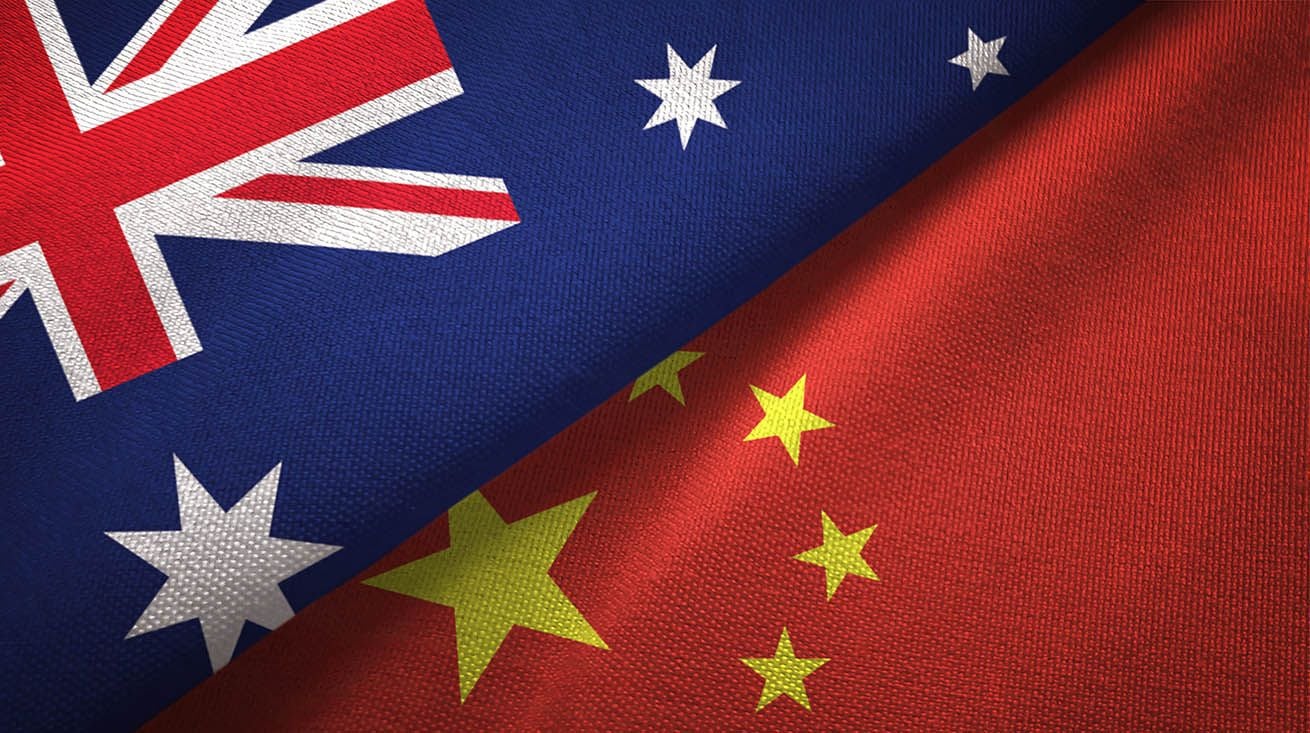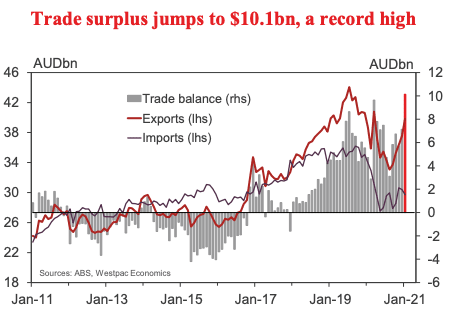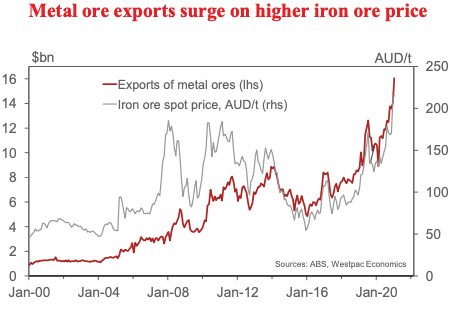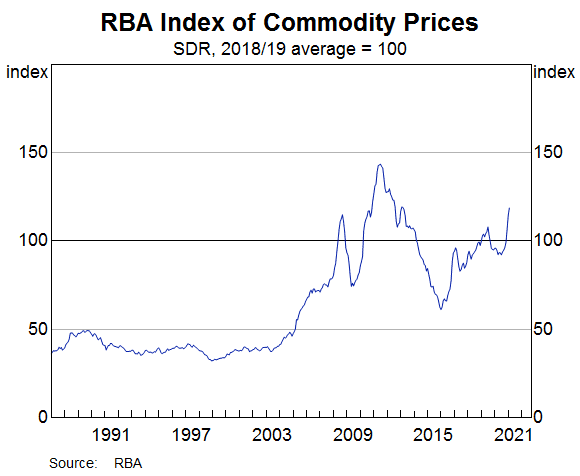Record Trade Surplus Underpins Australian Dollar's Attractive Fundamentals
- Equity market downturn poses headwinds to AUD
- But record trade surplus is supportive
- Strong fundamentals underpin AUD outlook

Image © Adobe Images
- GBP/AUD rate at publication: 1.7841
- Bank transfer rates (indicative guide): 1.7217-1.7340
- Money transfer specialist rates (indicative): 1.7370-1.7700
- More information on securing specialist rates, here
- Set up an exchange rate alert, here
The fundamental backdrop underpinning the Australian Dollar was bolstered Thursday by news of a fresh record high in Australia's trade surplus, but struggling global equity markets appear to be preventing any liftoff in the currency in the near-term.
Global markets continue to edge lower in the face of rising bond yields, lead by those of U.S. 10-year treasuries. The rise in yields is symptomatic of an investor community that is concerned with the potential of high inflation rates in the future which will bring forward the timing of the next Federal Reserve interest rate rise.
The rise in yields raises the cost of finance through the U.S. and global economies and could pose a potential headwind to the recovery, this is understandably reflected in lower equity markets.
The Australian Dollar's correlation with risk sentiment therefore means it will struggle to find upside traction in such an environment.
However, the fundamental backdrop underpinning the Aussie currency was bolstered overnight with the release of data showing Australia's trade surplus had reached a new record, which will likely mean downside in the Australian Dollar will be limited and puts it in a good position to spring higher if global markets manage to regain an offensive footing.
The Pound-to-Australian Dollar exchange rate (GBP/AUD) is quoted at 1.7877 having been as high as 1.8082 already this week, but as low as 1.78. The Australian-to-U.S. Dollar exchange rate is quoted 0.64% higher on the day at 0.7806, which puts it close to this week's highs. This week's low is at 0.7742.
It was reported by the ABS on Thursday that Australia's trade surplus in goods and services hit A$10.1BN in January, a fresh record high. This represents a A$3.0BN improvement on December, which was revised up from A$6.9BN to A$7.1BN.
The market consensus expectation was for a reading of A$7.5BN.
Image courtesy of Westpac.
A country that has a strong export base tends to find its currency enjoys a strong fundamental foundation, meaning it is not exposed to the whims of international capital flows which can often be volatile.
Stephen Gallo, European Head of FX Strategy says that expecting gains in the Australian Dollar is a "compelling" proposition owing to the rapid transformation underway "in terms of AUD's relative safety". (Read: Australian Dollar a Compelling Buy: BMO Capital's Gallo).
"In the 48-year history of modern floating exchange rates, AUD has never been backed by a current account surplus anywhere near that magnitude. Given the pullback last week, we think the present moment is a good entry point for re-establishing long-AUD positions," says Gallo.
According to data from the ABS out on Tuesday, Australia recorded a A$14.5BN (3.0% of GDP) current account surplus for the fourth quarter, taking the 2020 surplus to A$49.1BN (2.6% of GDP).
The surplus in what is effectively Australia's bank balance with the rest of the world is being driven by the country's trade surplus, and this is only likely to have improved given Thursday's trade balance numbers.
{wbamp-hide start} {wbamp-hide end}{wbamp-show start}{wbamp-show end}
"Australia’s trade account has now been in surplus for 37 consecutive months – each month through 2018, 2019 and 2020, as well as the opening month of 2021," says Andrew Hanlan, Senior Economist at Westpac. "What a way to start the New Year – a fresh record high for the trade surplus, in dollar terms, eclipsing the A$9.6BN last March."
Export earnings grew by 6.2% and imports dipped by 2.3%.
The ABS says the amount earned on exports increased courtesy of higher commodity prices, which rose by 7.6% in USD terms or 4.8% in AUD terms.
Image courtesy of Westpac
"A stand-out has been the spike in the iron ore price, up on strong demand from China and constrained supply," says Hanlan.
This lift in commodity prices extends the trend evident over the past year, with the country's terms of trade increasing by 7.3% in
2020.
Gallo tells clients the Australian Dollar trails the rally in the Reserve Bank of Australia's export commodity index, suggesting to him that more Australian Dollar upside is likely.
In 2013 - the last time the index reached current levels - AUD/USD recored a high at 1.0582 and GBP/AUD meanwhile reached an all-time low that year at 1.4382.
The Australian Dollar was one of the best performing major currency of 2020 with gains appearing to correlate with an uninterrupted rally in the value of bulk iron ore futures, confirming the importance of this commodity to Aussie exchange rate dynamics.
Stimulus measures in China have resulted in huge demand for raw materials as authorities build themselves out of the covid-induced slump of early 2020 and as a result of the longer-term quest for full self sufficiency in economic terms.
But a more global recovery could get underway in 2021 as the world shakes off the effects of the covid crisis.
Foreign exchange strategists at UBS recently told clients they are holding a constructive view of commodity-linked currencies, including the Aussie.
"Higher US yields on the back of larger fiscal deficits and stronger economic activity is likely to come with higher real asset prices as well, and this includes commodity prices. We think this will add fuel to commodity currencies, not just from a terms-of-trade angle, but also from a risk sentiment perspective that comes with stronger economic activity and buoyant risk assets," says Thomas Flurry, a foreign exchange strategist at UBS.
"Australia being a major commodities exporter, a pick up in industrial commodity prices like Copper & Iron ore has supported AUD flows. We expect further upside for Copper prices as we expect USD to soften and Chinese demand for commodities remains strong, suggesting further gains for AUD/USD," says Paul Robson, Head of G10 FX Strategy at NatWest Markets.







